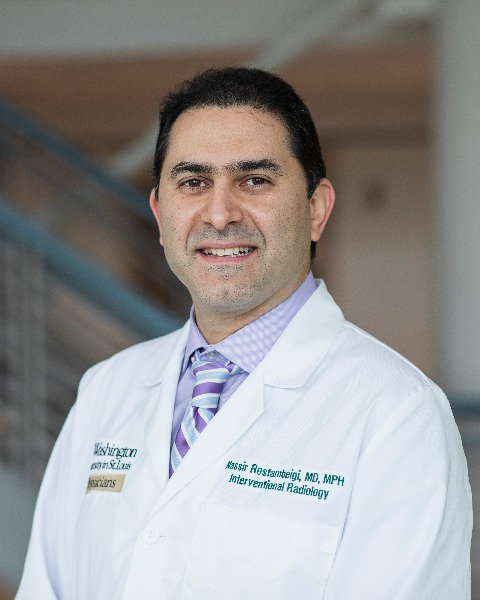Portal Hypertension
Does portosystemic shunt creation for complication of portal hypertension after liver transplant modify outcomes?

Nassir Rostambeigi, MD MPH
Associate Professor
Mallinckrodt Institute of Radiology, Washington University School of MedicineDisclosure(s): No financial relationships to disclose
- FJ
Fayez Jabboure, MS4
Research Associate
Washington University in St. Louis 
Seung Kim, MD
Associate Professor
Mallinckrodt Institute of Radiology, Washington University School of Medicine
Michael Darcy, MD (he/him/his)
Professor
Washington University, Saint Louis- KK
Kevin Korenblat, MD
Professor
Washington University in St. Louis
Presenting Author(s)
Author/Co-author(s)
Recurrent portal hypertension (PH) complicates only a certain group of patients after a successful liver transplant (LT). We aimed to study the incidence of this phenomenon and explore its possible risk factors and outcomes.
Materials and Methods:
Patients who underwent LT (n=1792) in a large LT center between Jan 2000 and Dec 2020 were reviewed. A population of patients who also underwent transjugular intrahepatic portosystemic shunt (TIPS) during this 21-year period were identified (n=2020) and then cross checked with the population who underwent LT and patient who underwent TIPS or variceal embolization after LT were identified. Comparisons were made with a random selection of control LT patients (n=400, 22% of all sample size). Clinically significant portal hypertension was defined as if patient required either TIPS or balloon-occluded retrograde transvenous obliteration of varices (BRTO) after LT. Indication for LT, time after LT until an intervention is needed, whether patient had any hepatic malignancy, indication for TIPS, graft and overall survival, history of graft rejection as well as technical characteristics of TIPS were recorded. Survival curves were plotted for evaluation of graft and overall survival and intervention-free survival after LT.
Results: 30 (of 1792, 1.6%) patients required a type of intervention to treat complication of PH (TIPS=28, BRTO=2, one patient required both). Mean (SD) age at time of intervention was 57 (11). 12 patients (40%) were female. 22 (73%) patients required intervention for ascites and the rest for gastrointestinal bleeding. Etiology of cirrhosis was mainly Hepatitis C among patients who required TIPS after LT (15, 54%), compared with 34% in controls. 2 patient who required BRTO both had history of non-alcoholic steatohepatitis. Median (IQR) time from LT to intervention was 6 (2-9) years. Overall survival was significantly worse in patients who required TIPS post LP compared to those who did not (HR=3.1, p< 0.001). If patients survived after TIPS for more than 6 weeks, then TIPS resulted in ascites resolution in 18 out 23 (78%).
Conclusion:
Recurrent portal hypertension is seen in less than 2% of patients after liver transplant. The majority of these require intervention for control of ascites. Hepatitis C was primary etiology for cirrhosis. Although patients who required TIPS after LT have worse survival, TIPS resulted in improvement in ascites in 78% of patients who survived after the acute post-TIPS episode.

.png)
.png)
.png)
.jpg)
.png)
.png)
.jpg)
.jpg)
.png)